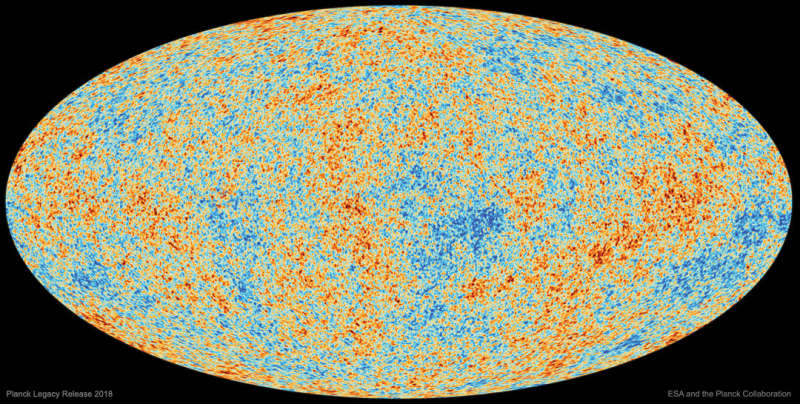Credit & Copyright: European Space Agency,
Planck Collaboration
Explanation:
What is our universe made of?
To help find out, ESA launched the
Planck satellite from
2009 to 2013 to map, in unprecedented detail, slight temperature differences on the
oldest optical surface known --
the background sky when our universe first
became transparent to light.
Visible in all directions, this
cosmic microwave background
is a complex tapestry that could only show the
hot and cold patterns observed were the universe to be composed of specific
types of energy
that evolved in specific ways.
The final results,
reported last week,
confirm again that most of our universe
is mostly composed of mysterious and unfamiliar
dark energy, and that even most of the remaining matter energy is
strangely dark.
Additionally, the "final" 2018 Planck data
impressively
peg
the age of the universe at about 13.8 billion years and the local
expansion rate -- called the Hubble constant -- at 67.4 (+/- 0.5) km/sec/Mpc.
Oddly, this early-universe determined
Hubble constant
is slightly lower than
that determined by other methods in the late-universe,
creating a tension that is causing much
discussion and
speculation.
1999 2000 2001 2002 2003 2004 2005 2006 2007 2008 2009 2010 2011 2012 2013 2014 2015 2016 2017 2018 2019 2020 2021 2022 2023 2024 2025 |
Январь Февраль Март Апрель Май Июнь Июль Август Сентябрь Октябрь Ноябрь Декабрь |
NASA Web Site Statements, Warnings, and Disclaimers
NASA Official: Jay Norris. Specific rights apply.
A service of: LHEA at NASA / GSFC
& Michigan Tech. U.
|
Публикации с ключевыми словами:
CMBR - universe - Реликтовое излучение - возраст Вселенной
Публикации со словами: CMBR - universe - Реликтовое излучение - возраст Вселенной | |
См. также:
Все публикации на ту же тему >> | |
